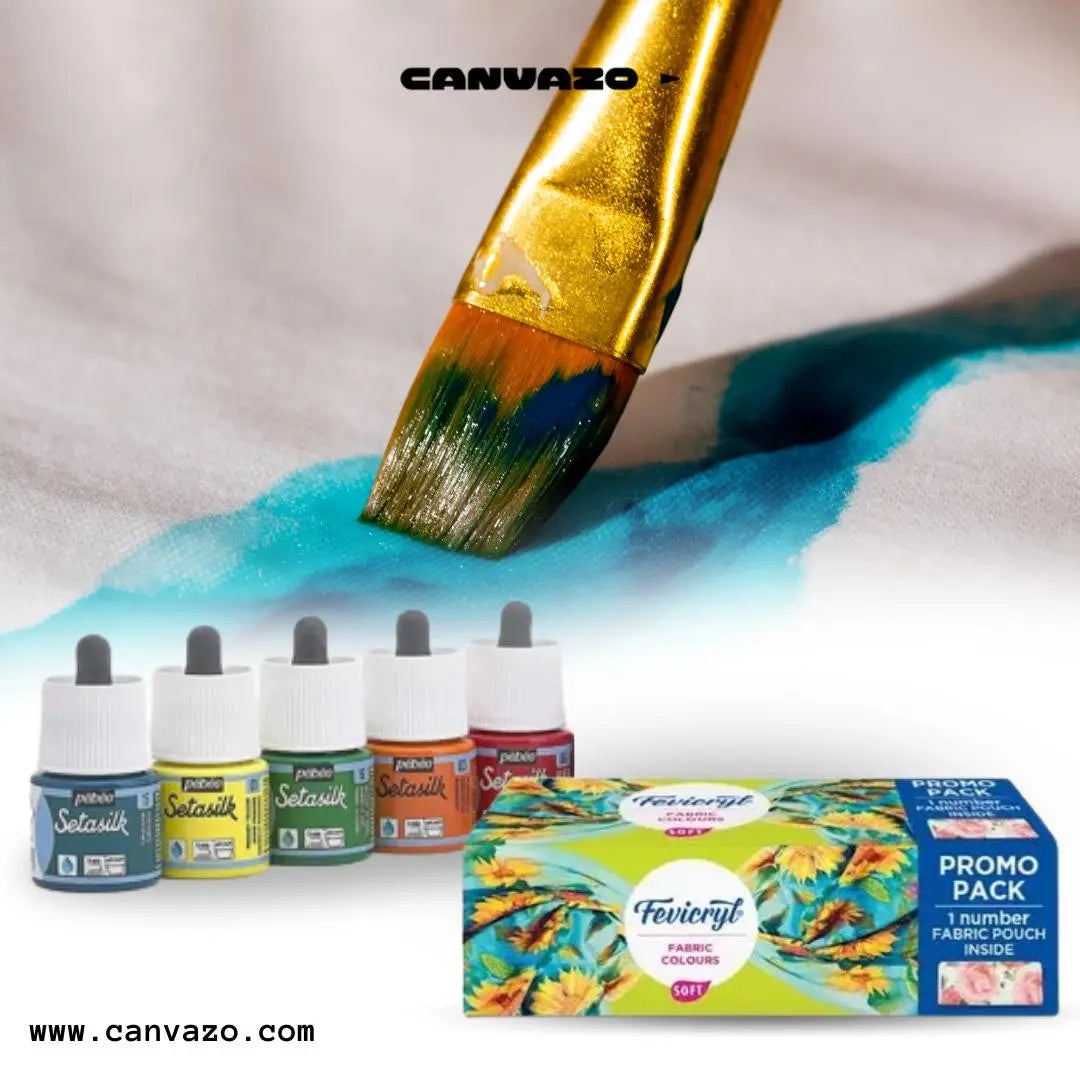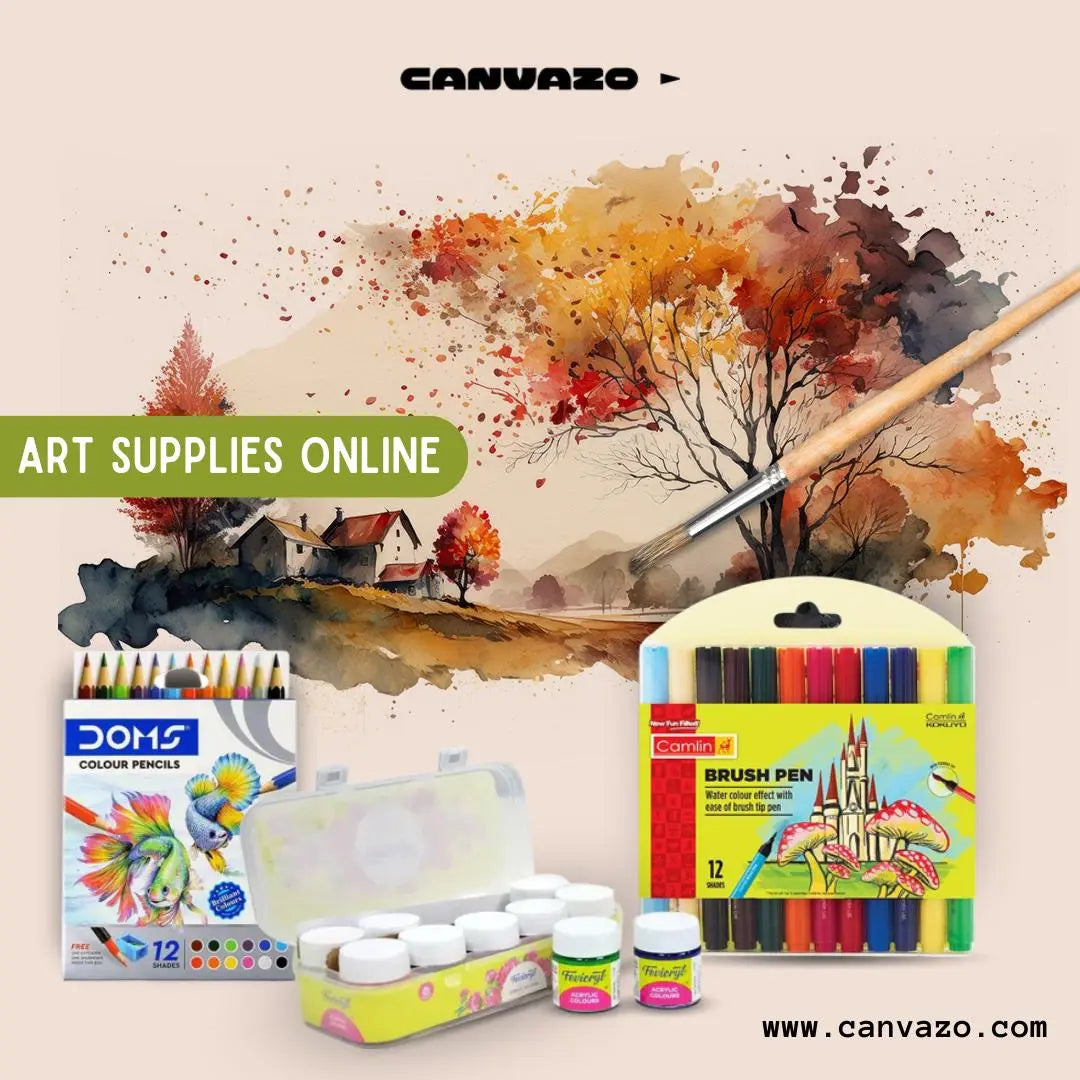Fabric painting is a creative and fun way to transform plain fabrics into works of art. It is a versatile technique that can be used to personalize and embellish clothing, home decor items, and accessories. Fabric painting is popular among artists, hobbyists, and crafters of all skill levels. In this blog post, we will discuss the basics of fabric painting, the different types of fabric paints, and some tips for creating beautiful fabric art.
Basics of Fabric Painting
Before you begin fabric painting, it's essential to prepare your fabric. Make sure it is clean, dry, and free from any wrinkles or creases. You can wash your fabric in cold water and let it air dry or use an iron to remove any wrinkles. Once your fabric is prepared, you can begin painting.
When it comes to fabric painting, you can use various techniques, including stencilling, stamping, freehand painting, and screen printing. Stencilling involves using a stencil to create a design on your fabric, while stamping involves using a stamp to create a pattern or design. Freehand painting involves painting directly onto the fabric using a brush or sponge, In contrast screen printing involves using a stencil and a mesh screen to transfer the design onto the fabric.
Different Types of Fabric Paints
There are different types of fabric paints available in the market, each with its unique properties and uses. Here are some of the most common types of fabric paints:
-
Acrylic Fabric Paints
Acrylic fabric paints are versatile and can be used on a wide variety of fabrics. These paints come in a range of colors and can be used for various fabric painting techniques, including stencilling, screen printing, and freehand painting. Acrylic fabric paints are water-resistant and permanent, making them ideal for outdoor projects.
-
Fabric Spray Paints
Fabric spray paints are a convenient option for fabric painting, as they can be sprayed directly onto the fabric. These paints come in a variety of colors and can be used for various fabric painting techniques, including stencilling and freehand painting. Fabric spray paints are water-resistant and permanent, making them ideal for outdoor projects.
-
Fabric Dyes
Fabric dyes are a great option for coloring fabrics, as they penetrate the fibers and create vibrant, long-lasting colors. They can be used on various fabrics, including cotton, silk, and linen. Fabric dyes come in a variety of forms, including liquid dyes, powder dyes, and dye pens.
-
Fabric Markers
Fabric markers are a convenient option for creating detailed designs and patterns on fabrics. They come in a variety of colors and can be used for various fabric painting techniques, including freehand painting and stencilling. Fabric markers are permanent and do not require heat setting.
-
Fabric Paint Pens
Fabric paint pens are another convenient option for fabric painting, as they allow for precise application of paint. They come in a variety of colors and can be used for various fabric painting techniques, including freehand painting and stencilling. Fabric paint pens are permanent and do not require heat setting.
Best Fabric Paints available in India -
Pebeo Setacolor is a range of high-quality fabric paints that are known for their vibrant colors and excellent adhesion to fabrics. These paints are versatile and can be used for a wide variety of fabric painting techniques, including freehand painting, stencilling, and screen printing. Pebeo Setacolor paints come in a range of colors, including metallics, fluorescents, and pastels, and can be used on both light and dark fabrics.
Fevicryl is a well-known brand in the Indian market, offering a range of fabric paints suitable for various fabric types. Their fabric paints come in a wide range of colors, including metallic and fluorescent shades. The paint is easy to use and can be applied using a brush or sponge. Once dry, the colors are permanent and do not fade or crack. Fevicryl fabric paints are also water-resistant, making them ideal for outdoor projects.
Camlin Fabrica Acrylic Colors is another popular brand in India for fabric painting. These paints are water-based and can be used on a wide variety of fabrics, including cotton, silk, and synthetic fabrics. The colors are bright and vibrant, and the paint dries quickly, making it ideal for large-scale projects. The paints are also non-toxic and safe for use by children.
Pebeo Setasilk is a range of high-quality silk paints that are specially designed for use on silk fabrics. These paints are known for their vibrant colors and excellent adherence to silk, resulting in a smooth and even finish. Pebeo Setasilk paints come in a range of colors, including metallics, pearlescent, and fluorescent shades. They can be used to create a wide variety of effects, from subtle washes to bold and striking designs.
For Fabric Spray Paints, speciality shoe paints, hot water fabric dyes and cold water fabric dyes, just ask us customer service for assistance.
Tips for Creating Beautiful Fabric Art
Here are some tips to help you create beautiful fabric art:
-
Choose the Right Paint -
Choosing the right paint is essential for creating beautiful fabric art. Consider the fabric type and the painting technique you will be using before selecting your paint. Different paints have different properties, and some may work better than others for your project.
-
Use the Right Tools -
Using the right tools is essential for creating precise and detailed designs. Depending on the painting technique, you may need brushes, sponges, stencils, or stamps. Make sure you have all the tools you need before starting your project.
-
Test Your Paint -
Before painting on your fabric, it's a good idea to test your paint on a scrap piece of fabric. This will give you an idea of how the paint will look on your fabric and allow you to make any adjustments before painting your final piece.
-
Use a Good Quality Fabric -
Using a good quality fabric is essential for creating beautiful fabric art. Please choose a fabric that is suitable for the painting technique you will be using, and make sure it is clean and free from any wrinkles or creases.
-
Plan Your Design -
Planning your design before you begin painting can help you create a more cohesive and visually appealing piece. You can sketch out your design on paper or use a software program to create a digital design.
-
Use Heat Setting -
Heat setting is essential for ensuring that your fabric paint is permanent and will not wash out. Follow the instructions on your paint to determine the appropriate heat setting method and temperature.
-
Practice -
Like any skill, fabric painting takes practice. Don't be discouraged if your first few projects don't turn out exactly as you had hoped. Keep practicing and experimenting with different techniques and paints until you find what works best for you.
In conclusion, fabric painting is a versatile and fun way to transform plain fabrics into works of art. With the right tools, techniques, and paint, you can create beautiful and unique fabric art that showcases your creativity and style. Whether you're a seasoned artist or a beginner, fabric painting is a rewarding and satisfying hobby that can provide endless hours of enjoyment. So, grab your paints and get creative!


